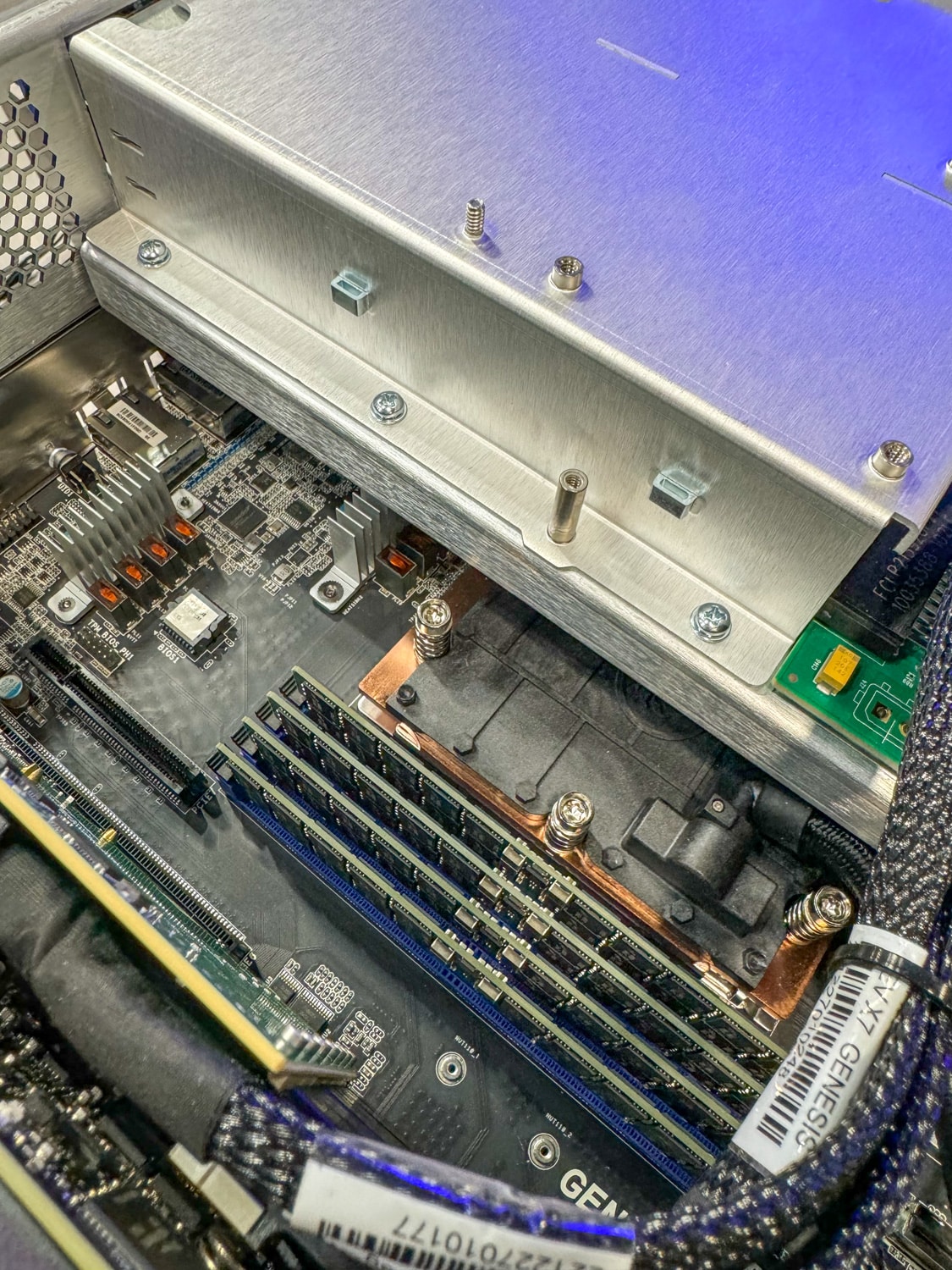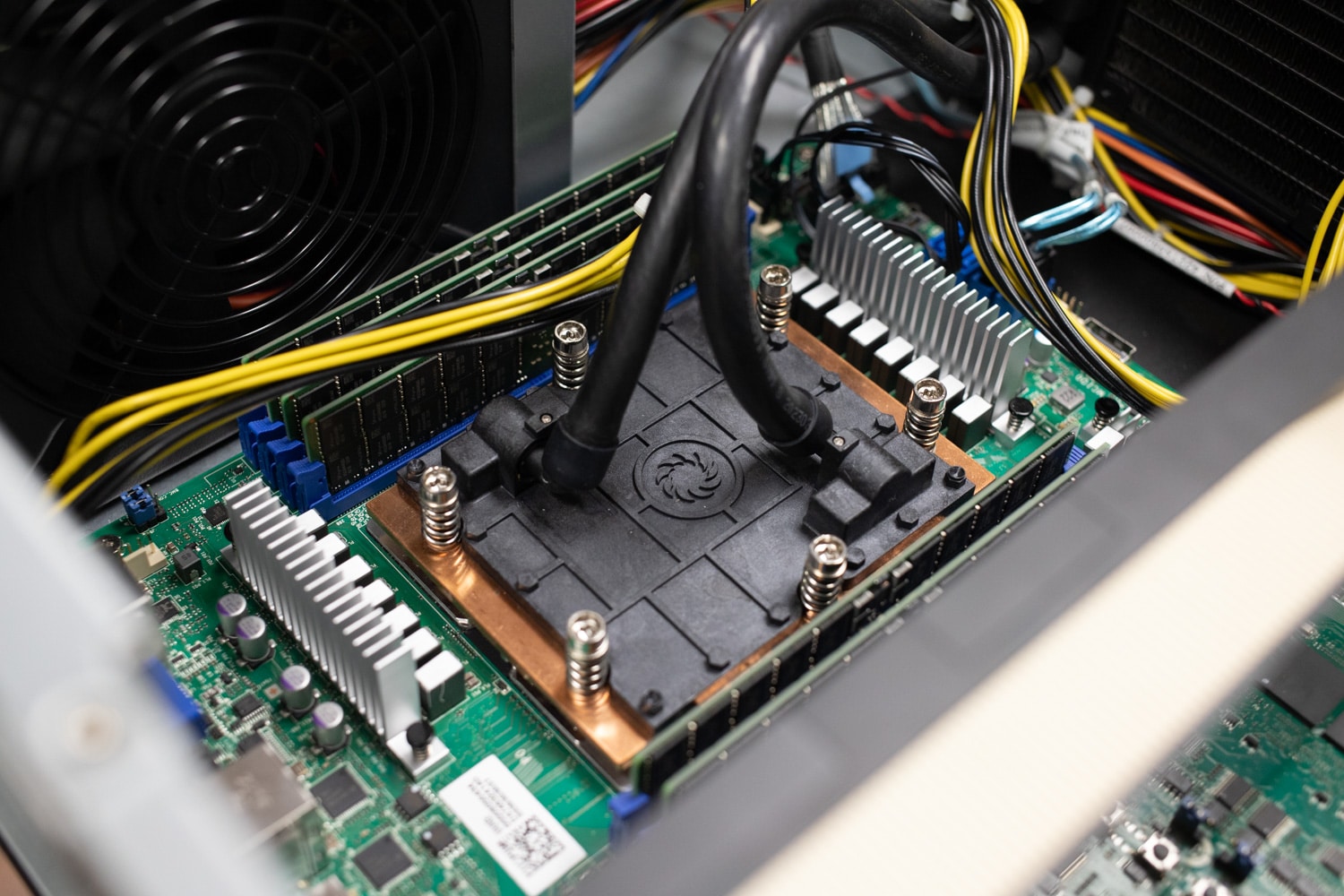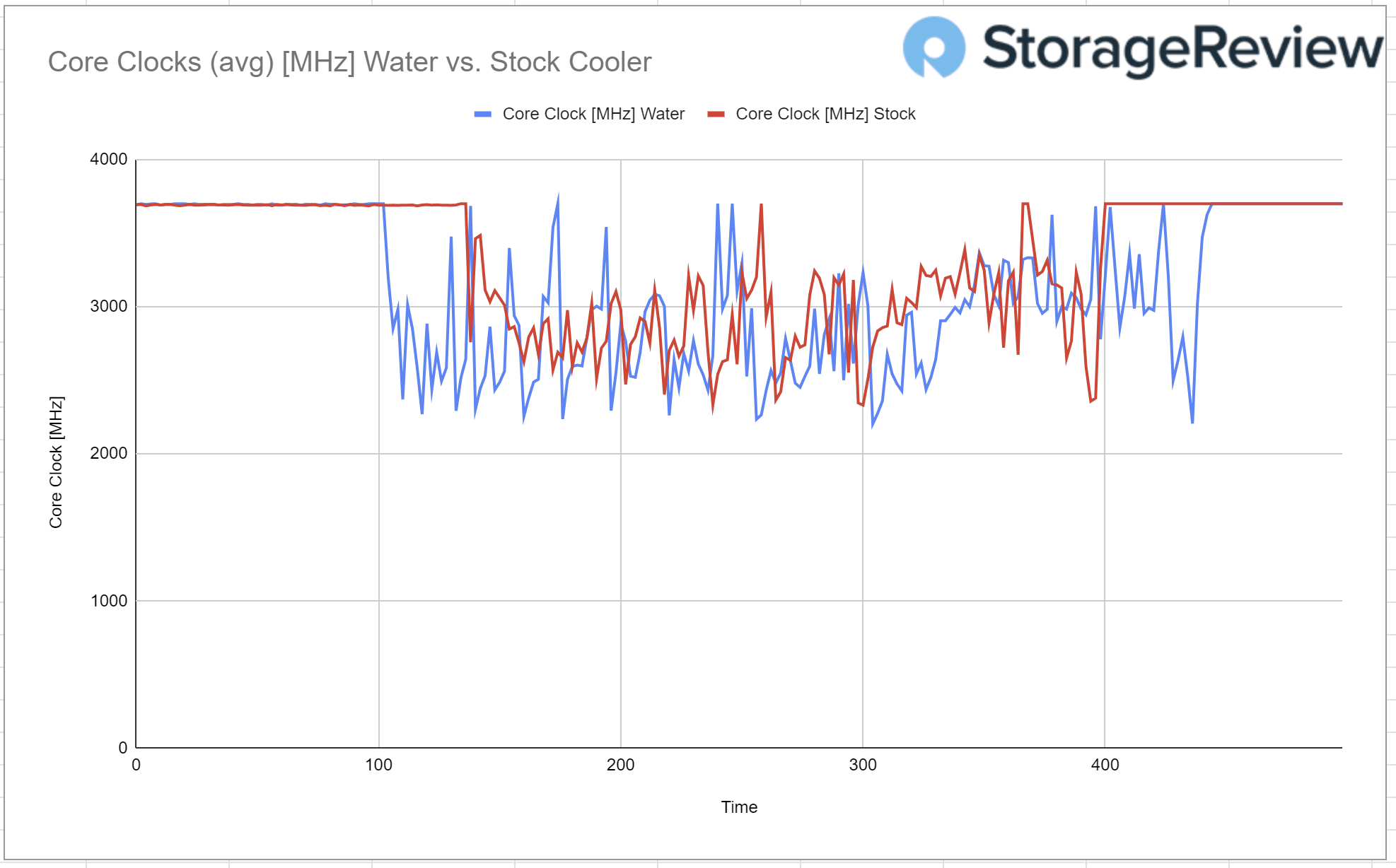When it comes to cooling Servers and Workstations, Dynatron has a big name in the game. Not only does Dynatron have air coolers, they have numerous offerings for liquid cooling as well. You may have seen their name or even unbranded coolers inside machines like the 45Homelab HL15, or the TYAN Transport HX FT65T-B8050 that we’ve reviewed. Dynatron makes and supplies these coolers for OEMs to put into their systems.
When it comes to cooling servers and workstations, Dynatron has a big name in the game. Not only does Dynatron have air coolers, they have numerous offerings for liquid cooling as well. You may have seen their name or even unbranded coolers inside machines like the 45Homelab HL15, or the TYAN Transport HX FT65T-B8050 that we’ve reviewed. Dynatron makes and supplies these coolers for OEMs to put into their systems.
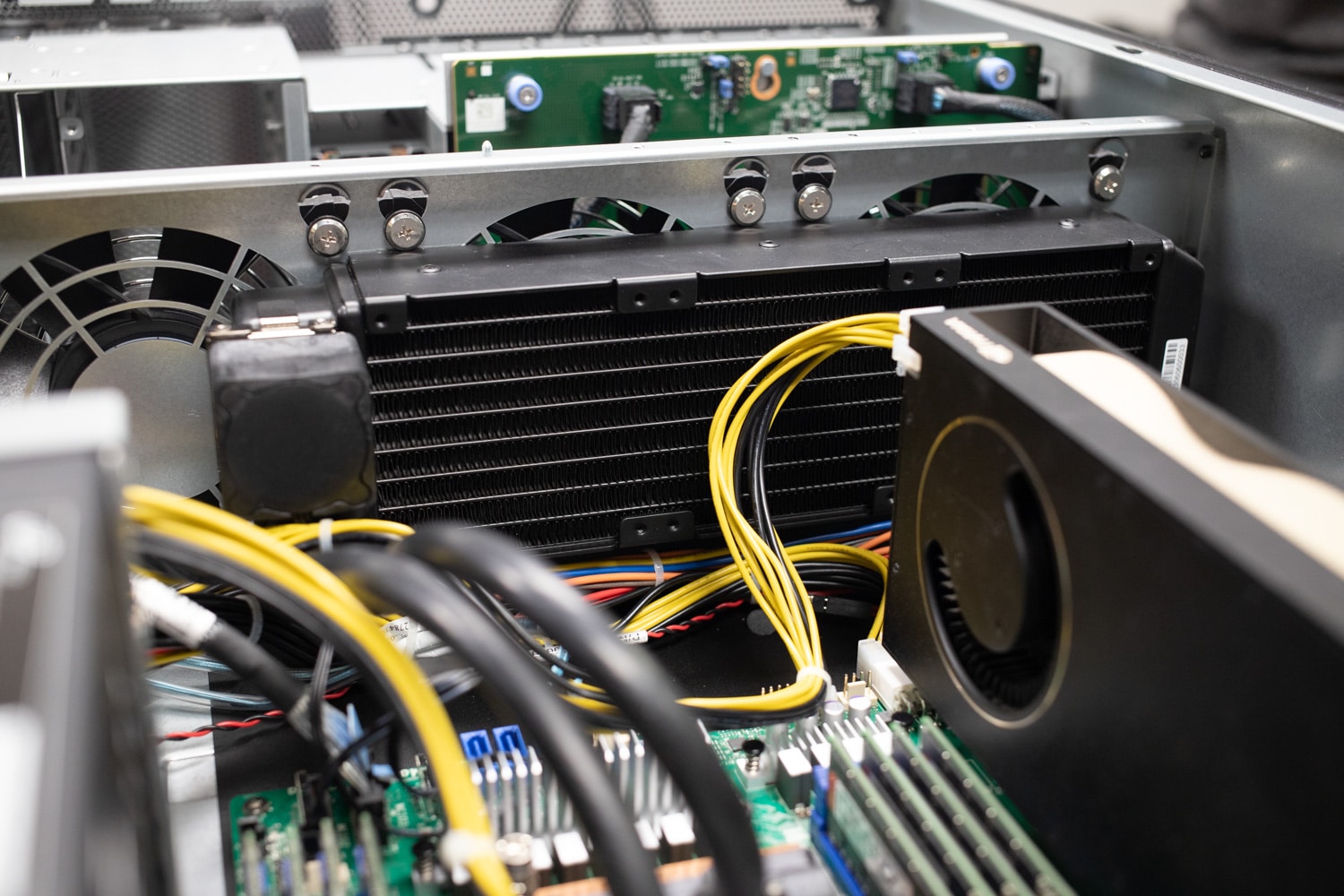
We got ahold of a custom Dynatron AIO liquid cooler to take a look at in the lab. For our testing, we put the AIO into the Tyan HX FT65T-B8050 that we reviewed a few weeks back. The AIO is being put in place of the stock Dynatron J10 Air cooler that comes in the Tyan. In our application, we removed the radiator fans and put the radiator against the fans in the center of the chassis.
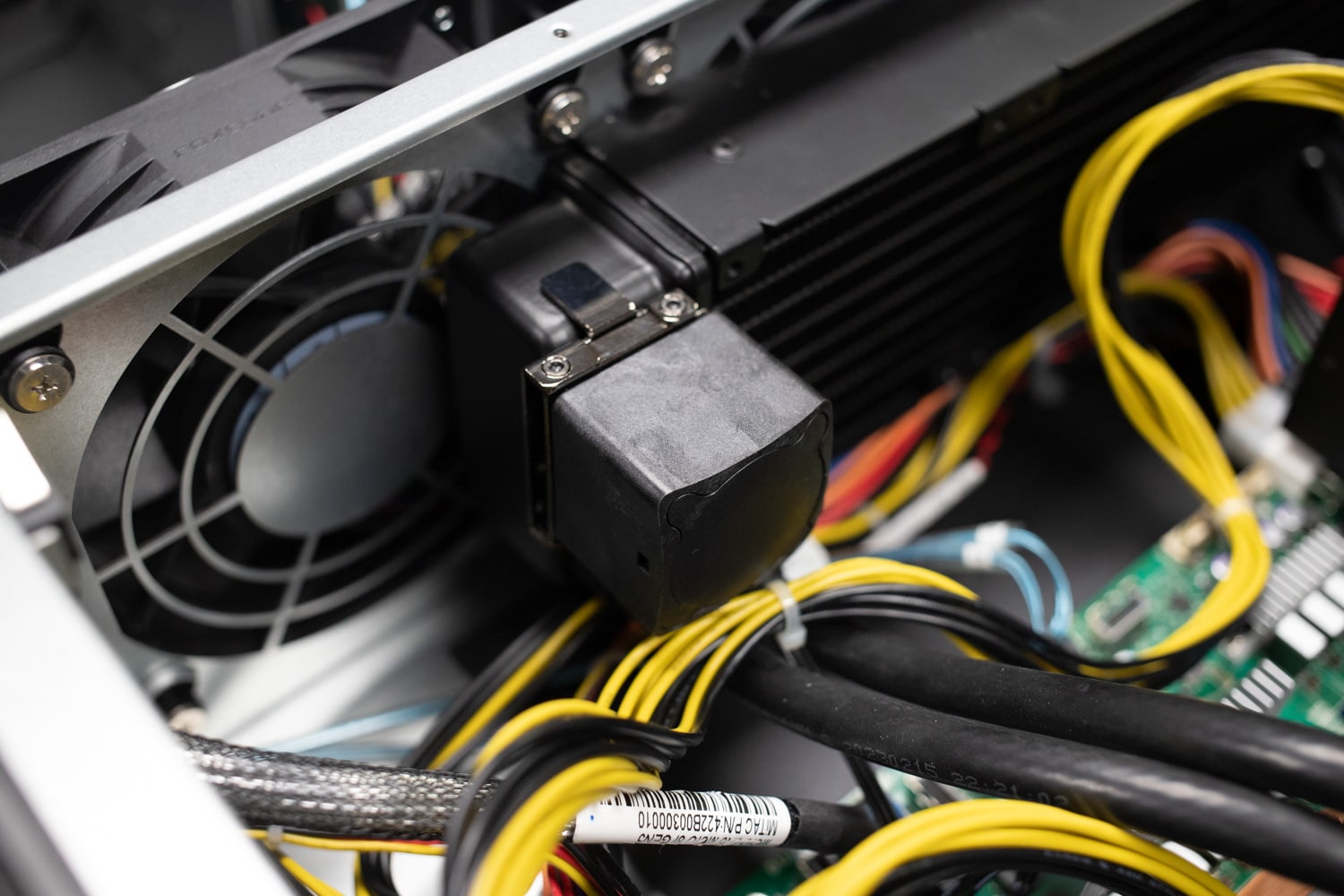
This AIO setup is comprised of Dynatron’s L35 Radiator and their SP5 cold plate from their L32, put together in a custom configuration to fit the beast that is the EPYC 9684X.
Dynatron AIO Specifications
It’s hard to get the exact specs on this unit since it is a custom configuration and there is no formal spec sheet for this setup. The Specifications below are for the L35 radiator and fan setup.
| Category | Information |
|---|---|
| Server Applications | 2U Server and Up, Tower Servers |
| Fan Dimensions | 80 x 80 x 38 mm (3.15 x 3.15 x 1.5 in) |
| Radiator Assembly Dimensions | 323.2 x 44 (82 with fans) x 85.15mm (12.72 x 1.73 (3.23 with fans) x 3.35 in) |
| Fan Speed |
|
| Power Consumption |
|
| Noise Level |
|
| Air Flow |
|
| Air Pressure |
|
Closed Liquid Loop Applications
Closed liquid loops can be an attractive option for servers as they can have lower noise and a more flexible footprint than other applications. OSS leveraged this flexibility in their Gen 5 SDS build that was shown off at SC23 which we covered back in November. The use of a Dynatron SP5 liquid cooler in this system allowed OSS to place the power supplies over the area where an air cooler would be, allowing space for the GPUs to go and still fit their form factor.
Noise-wise, we ran into issues on the Tyan where the little fan on the J10 air cooler would scream under load. Once swapping in the liquid cooler though, we noticed a lot lower volume under load. The CPU fan which was once tied to CPU load in terms of noise output completely went away, as we were leveraging existing chassis fans for radiator airflow. So in our system, the noise levels dropped dramatically.
Dynatron Loop Performance
For performance advantages, this is where things do get skewed for air versus liquid coolers. Good air coolers perform very well, and the same goes for liquid coolers. When they both are designed to follow the same spec in terms of how much thermal energy they can move from a given area, results will look quite similar between the two.
In our case we ran tests of the same hardware, swapping only the cooler, and saw minimal change. We loaded up the CPU with an intensive HPC workload and compared the average core clockspeed between both coolers.
You could say it might have changed things a very small percentage, but that is within the range of error for those tests. The advantage of liquid cooling is not always greater performance, but giving the customer greater flexibility in terms of how they manage heat, noise, and power consumption in different environments.
Other Dynatron Offerings
As previously mentioned, Dynatron covers more than just CPU air and liquid coolers; they have their name all around the cooling market. Dynatron has other products like passive heatsinks, custom liquid loop parts, RGB parts, Blower fans, and case fans. These different options allow OEMs to get all of their cooling needs from one supplier, as well as the option to have custom cooling solutions.
The CPU cooler options Dynatron offers cover multiple form factors and shapes on the same socket to give you loads of flexibility in your configurations. Dynatron also has options that cover tons of Sockets for not only server CPUs but desktop CPUs as well. The AMD socket options are FM1, FM2(+), AM2(+), AM3(+), AM4, AM5,C32, G34, Opteron 6000 and 6100, socket F, SP3, SP5, SP6, sWRX8, sTRX4, TR4, and TR5. For Intel CPUs, Dynatron covers sockets LGA1200, 115x, 1356, 1366, 1700, 1851, 2011 narrow and square, 2066 narrow and square, 3647 narrow and square, 4677, 4710, and 7529, PGA479, and PGA988.
For Liquid coolers, Dynatron has products that cover smaller consumer sockets like the AM5, all the way to server sockets like the SP5 for AMD CPUs. Dynatron also has numerous offerings for the Intel side of things as well. The AM5 socket has multiple options for coolers like a 120mm single fan radiator on the L5, to the L25-u, and its 5 40mm fans for a 1U rackmount chassis.
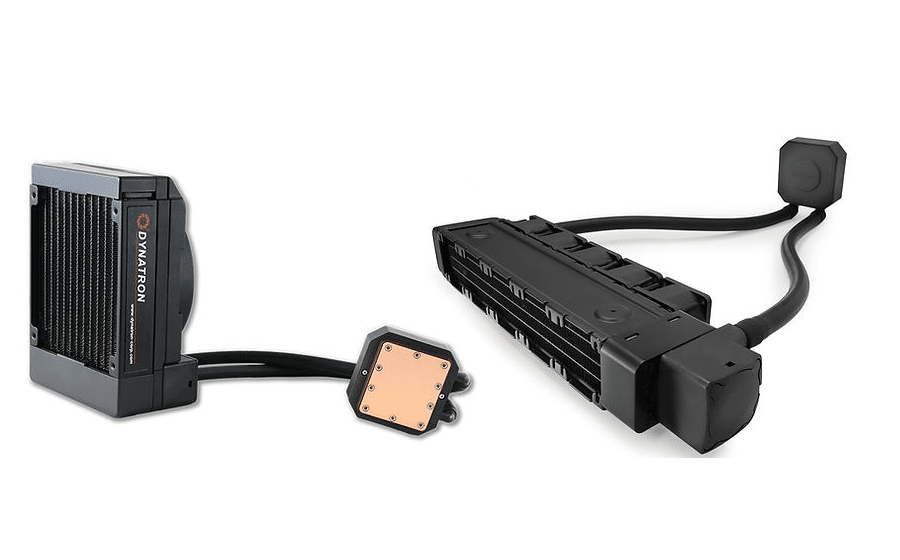
Dynatron L5 vs L25U
Currently, the SP5 socket is only offered with the L32 cooler which is designed to support up to a 500w TDP in only 1U, but we expect to see more options for it in the future. Dynatron will likely offer different form factors like 2U radiators, and maybe up to 4U or larger tower sizes for this socket in the future, similar to what they have done with other sockets.
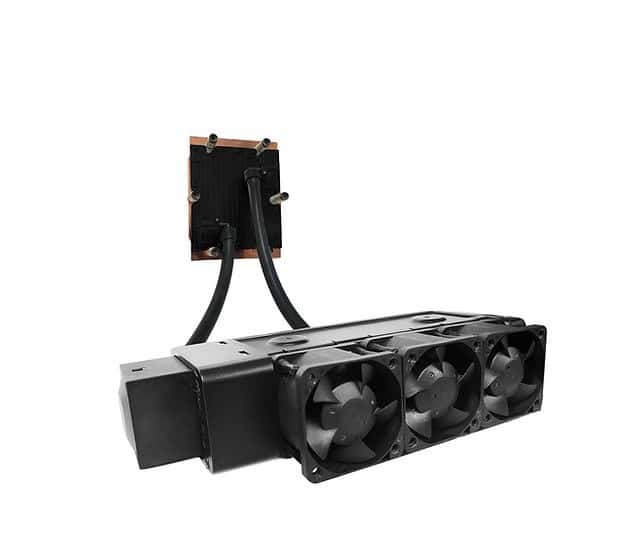
Dynatron L35
All of these different options from Dynatron give you coverage almost anywhere you need it in the cooling market.
Conclusion
Overall, we may not have seen huge thermal differences with this liquid cooler, but we did see noise reduction. The usage of a water cooler also allows you to relocate the cooler to other areas in the chassis to free up overhead space. Another liquid cooler benefit, is you have to worry less about the channeling of airflow since the radiator can cover a larger area. With the variety of cooling options that Dynatron offers, they cover tons of applications across the market. If you have any sort of server CPU cooling needs, Dynatron has probably come across your radar with at least one of their products.
Engage with StorageReview
Newsletter | YouTube | Podcast iTunes/Spotify | Instagram | Twitter | TikTok | RSS Feed

